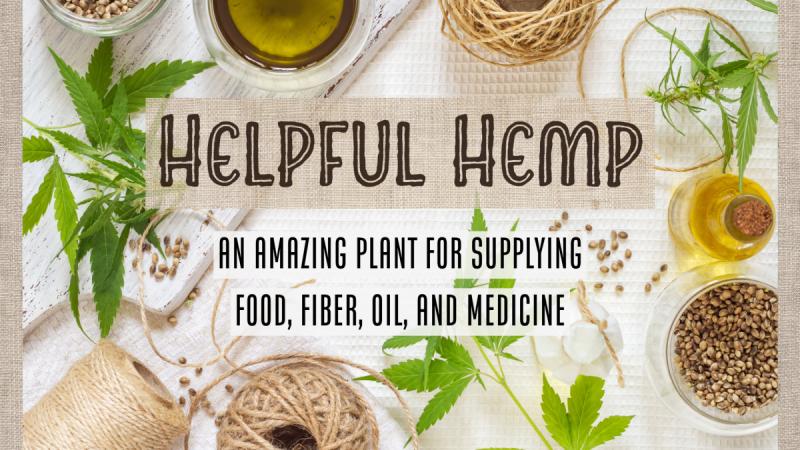 Because I was raised in a religious environment that forbade the use of alcohol, tobacco, and drugs, I used to have some pretty negative views about cannabis, the plant infamous for its use as the recreational drug, marijuana. But, in the late 1980s, I encountered the book, The Emperor Wears No Clothes by Jack Herer. In reading that book, I learned that Cannabis sativa may be one of the most useful plants on the planet.
Because I was raised in a religious environment that forbade the use of alcohol, tobacco, and drugs, I used to have some pretty negative views about cannabis, the plant infamous for its use as the recreational drug, marijuana. But, in the late 1980s, I encountered the book, The Emperor Wears No Clothes by Jack Herer. In reading that book, I learned that Cannabis sativa may be one of the most useful plants on the planet.
There are two major varieties of Cannabis, which were previously thought of as two different species. Many botanists now consider them different varieties of the same species because it appears they can interbreed. The first major variant is Cannabis sativa var. sativa, which is known as hemp. Hemp is primarily grown for its fiber and seeds. The second is Cannabis sativa var. indica (or simply Cannabis indica). This is the variety grown for medicinal and recreational use.
In this article, I'm going to focus on some of the many uses of hemp for food, fiber, and medicine.
Hemp Seed Superfood
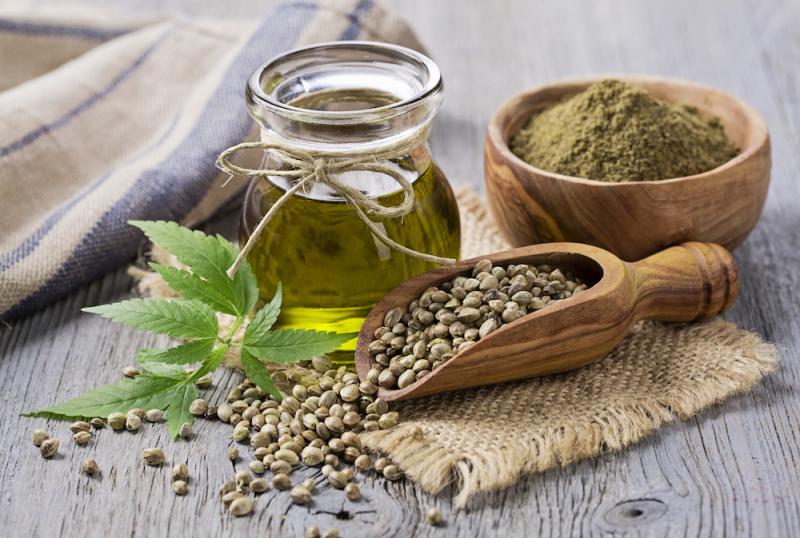 Hemp seeds are highly nutritious being a rich source of protein and essential fatty acids. They are high in the polyunsaturated essential fatty acids, omega-3 and omega-6. They even have a better ratio of these two fatty acids than flax seeds. They’re also high in GLA, an omega-6 fatty acid, that has been used to help with PMS, skin problems, and many other conditions. Hemp seeds are also a good source of protein, comparable to soy. Soy is 35% protein, while hemp seed is 25-30% protein. Both contain all nine essential amino acids, making them two plant foods that are complete proteins.
Hemp seeds are highly nutritious being a rich source of protein and essential fatty acids. They are high in the polyunsaturated essential fatty acids, omega-3 and omega-6. They even have a better ratio of these two fatty acids than flax seeds. They’re also high in GLA, an omega-6 fatty acid, that has been used to help with PMS, skin problems, and many other conditions. Hemp seeds are also a good source of protein, comparable to soy. Soy is 35% protein, while hemp seed is 25-30% protein. Both contain all nine essential amino acids, making them two plant foods that are complete proteins.
Hemp seeds have some advantages as a vegetarian protein source. They have a mild flavor and can easily be added to smoothies and other foods. Unlike soy, they aren't a common allergen and they don't contain phytoestrogens. Hemp seeds are also higher in arginine, the amino acid that helps produce nitric oxide, which lowers blood pressure. They’re also higher in methionine, a sulfur-containing amino acid that helps the liver remove toxins like heavy metals.
Hemp seeds are a good source of vitamin E, various B vitamins, and the minerals magnesium, potassium, iron, and zinc. They have a nutty flavor and can be eaten raw or cooked. Hemp hearts, shelled hemp seeds, have less fiber but are easier to add to foods. They can be used for protein powders, hempseed milk, and cheese, and can be cold-pressed to produce hempseed oil. Because of this, hemp seeds are not only useful for nutrition, they could help rebuild poor health which is why I consider them a superfood.
Hemp Seeds in TCM
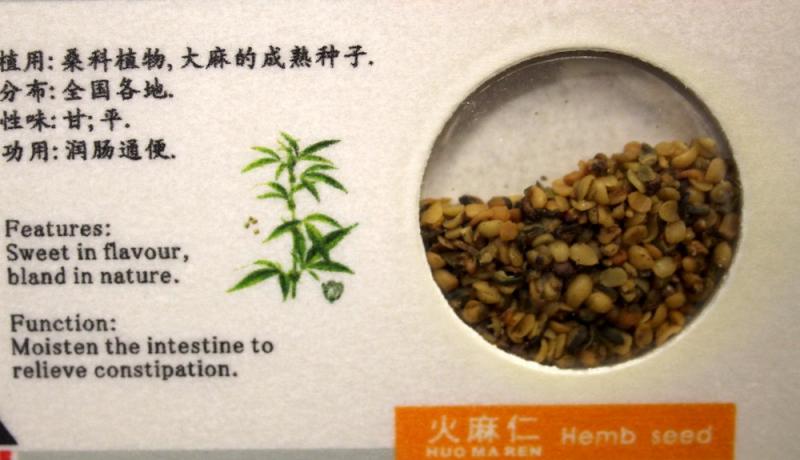 When I visited China back in 1986 we toured an herb farm where I saw hemp being cultivated. Hemp is used in China for its fiber, but hemp seeds are also used as a medicine in TCM. They use the whole seeds (as much of the fiber is in the hull) as opposed to the shelled seeds or hearts that are sold as a healthy food in the US.
When I visited China back in 1986 we toured an herb farm where I saw hemp being cultivated. Hemp is used in China for its fiber, but hemp seeds are also used as a medicine in TCM. They use the whole seeds (as much of the fiber is in the hull) as opposed to the shelled seeds or hearts that are sold as a healthy food in the US.
Hemp seeds are considered a moistening laxative. The whole seeds are crushed and deep-fried to reduce their toxicity. The recommended dose is 10 to 15 grams (about 1/3 to 1/2 ounce). My favorite TCM reference, Chinese Medicinal Herbology and Pharmacology says that an overdose of the seeds can produce digestive upset, irritability, cramps, headaches, as well as other symptoms, which suggests that eating large quantities of raw, unhulled hemp seeds is probably not a good idea. Stick with the hulled hemp seeds or hemp hearts.
Hemp Fiber
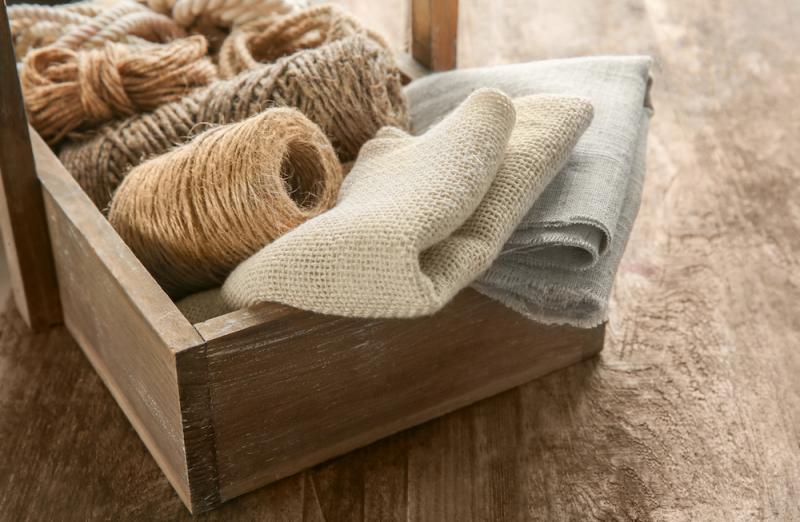 Hemp has been cultivated since ancient times as a source of fiber for paper, clothing, rope, and sails. The word canvas is probably derived from the Greek word, kannabis, which means two reeds or two sexes. One thing that makes the cannabis plant unique is that it not only has different male and female flowers; it can also have male and female plants. So this refers to the cloth made from hemp fiber. However, canvas today is primarily made from cotton or linen (flax).
Hemp has been cultivated since ancient times as a source of fiber for paper, clothing, rope, and sails. The word canvas is probably derived from the Greek word, kannabis, which means two reeds or two sexes. One thing that makes the cannabis plant unique is that it not only has different male and female flowers; it can also have male and female plants. So this refers to the cloth made from hemp fiber. However, canvas today is primarily made from cotton or linen (flax).
Until 1883, 75-90% of books, maps, newspapers, and even paper money was using hemp fiber paper. An interesting historical note is that the first draft of the Declaration of Independence was written on hemp paper. It was later transferred to parchment for preservation. Hemp fiber produces better-quality paper than wood pulp. It is more easily recycled and more environmentally friendly. A 1916 USDA Bulletin reported that one acre of hemp could produce as much paper as 4.1 acres of trees over a twenty-year period. Early American clothing was often made from hemp and old cloth was gathered to be recycled as cheap rag paper.
Hemp fiber was also used to make rope. I can still remember hemp rope from when I was a kid, even though I didn’t realize back then it was made from hemp fiber. There are many more industrial uses for hemp fiber that we won't go into here.
Hemp's Legal Troubles
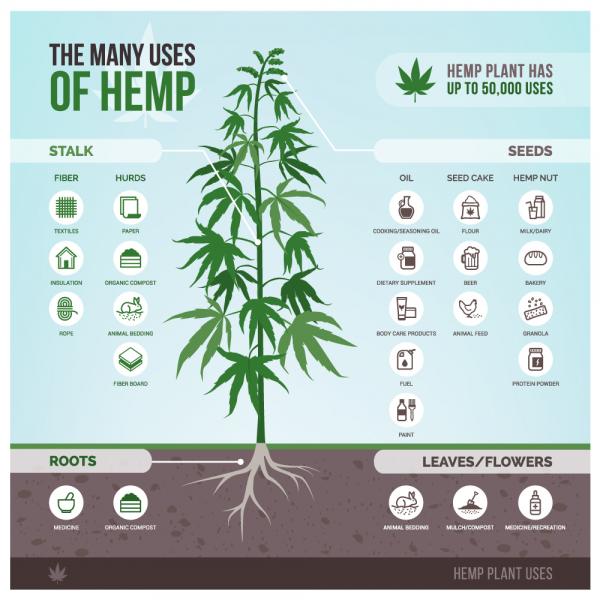 According to the book, The Emperor Wears No Clothes, hemp was widely grown in the United States until the 1930s. At that time, America’s top newspaperman, William Randolf Hurst, was heavily invested in wood pulp paper and petroleum. Because hemp could also be used to make paper and hemp seed to make a high-quality oil that can be used in paint and other products, he saw the hemp industry as a threat to his investments.
According to the book, The Emperor Wears No Clothes, hemp was widely grown in the United States until the 1930s. At that time, America’s top newspaperman, William Randolf Hurst, was heavily invested in wood pulp paper and petroleum. Because hemp could also be used to make paper and hemp seed to make a high-quality oil that can be used in paint and other products, he saw the hemp industry as a threat to his investments.
So, he began a smear campaign against it using an obscure Mexican term for cannabis, marijuana. Americans at the time knew the fiber as hemp and the medicine as cannabis. He was able to get the plant outlawed in 1937, but it was brought back into cultivation for World War II because they needed the fiber for the war effort. After the war, it was outlawed again until December of 2018, when a new farm bill was passed and signed into law allowing the cultivation of hemp under certain legal restrictions. The biggest one is that the tetrahydrocannabinol (THC) content has to be less than 0.3 percent. THC is the phytocannabinoid responsible for the hallucinogenic properties in the plant.
The bill also opened the possibility of marketing low-THC hemp extracts as medicine due to other phytocannabinoids they contain, including cannabidiol (CBD). Since that time we have seen an explosion in CBD products in the marketplace. About 113 phytocannabinoids have been identified in the cannabis plant, but the two that have had the most research done on them are THC and CBD.
Hemp Leaf as Medicine
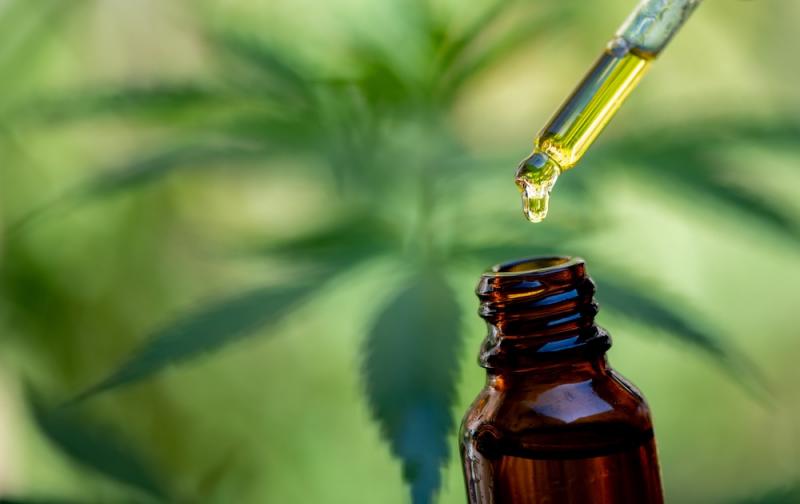
I learned first-hand that cannabis is a powerful medicine when many years ago a friend of mine supplied me with a glycerite made of cannabis leaf. Although the flower buds are typically used, it appears that the leaf also has medicinal value. I tried using the glycerite for situations where there was severe pain and I found it to be one of the most dependable pain relievers I’ve ever tried. It worked on pain that drugs hadn’t touched. In the end, I stopped using it because I was concerned with the legal problems.
Besides easing pain and inflammation, hemp leaves and buds are potentially helpful for people who suffer from chronic anxiety, especially people with PTSD. It may also be helpful for insomnia. There is some research indicating it may help control seizures (although forms with more THC seem to work better here). It is also helpful for regulating the immune system, particularly in helping to calm down immune reactions in autoimmune disorders. It has also been used in natural approaches to cancer treatment.
There is a problem with the cannabis being sold as marijuana, it has been bred to have a much higher level of THC and lower levels of CBD. This is not good. Using high-THC cannabis as a medicine poses some serious problems. So, I think it’s better to use the hemp leaves which are higher in other phytocannabinoids and low in THC if you want to use it medicinally, instead of recreationally.
The Entourage Effect
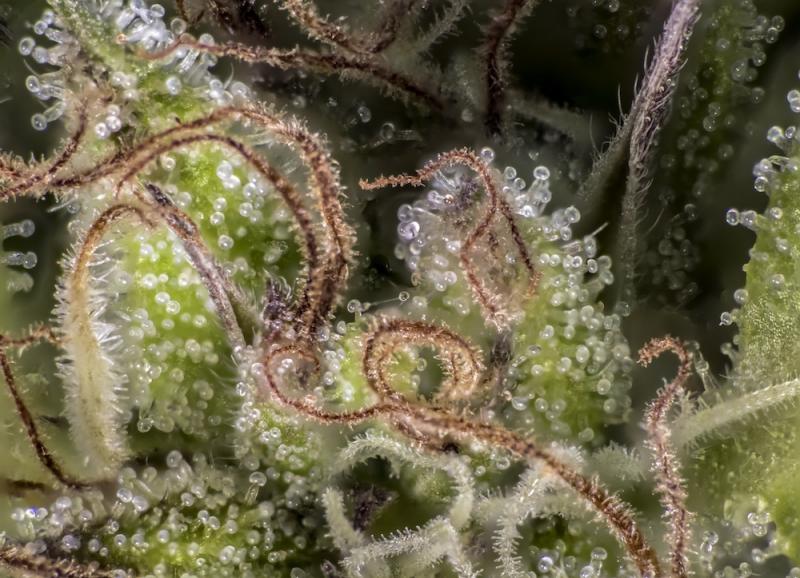 I’d like to use hemp leaf as an example of herbal synergy and the entourage effect. The current trend in the herb industry is tending towards isolating and concentrating plant constituents to use as supplements. This creates a more drug-like effect, but it doesn’t necessarily work better as a healing agent. Herbalists recognize that there is a synergy in the whole plant that is not present in isolates. This is also true for cannabis.
I’d like to use hemp leaf as an example of herbal synergy and the entourage effect. The current trend in the herb industry is tending towards isolating and concentrating plant constituents to use as supplements. This creates a more drug-like effect, but it doesn’t necessarily work better as a healing agent. Herbalists recognize that there is a synergy in the whole plant that is not present in isolates. This is also true for cannabis.
About 113 phytocannabinoids have been identified in the cannabis plant. A PhD researcher in Israel, who also happened to be the first to isolate THC and CBD in the 1960s, Dr. Raphael Mechoulam, has asserted that cannabinoids work better together than they do in isolation. He calls this the entourage effect.
This means that a whole-leaf extract containing many cannabinoids will probably work better than CBD alone. It also means that other compounds in cannabis, such as terpenes and flavonoids, enhance the beneficial effects of the phytocannabinoids.
For example, if you’ve ever smelled marijuana smoke, you are aware that cannabis is quite aromatic quality. This is particularly true of the buds, which are quite resinous. However, even the leaves have a distinct aroma, which means they also contain essential oils. The essential oils in cannabis tend to be high in terpenoids, many of which have antimicrobial effects as well as effects on the nervous system.
There are also about 20 flavonoids in cannabis. Flavonoids work synergistically with phytocannabinoids to give whole hemp cannabis greater anti-inflammatory, antimicrobial, anticancer, and anti-allergic properties than isolated CBD.
Using Hemp
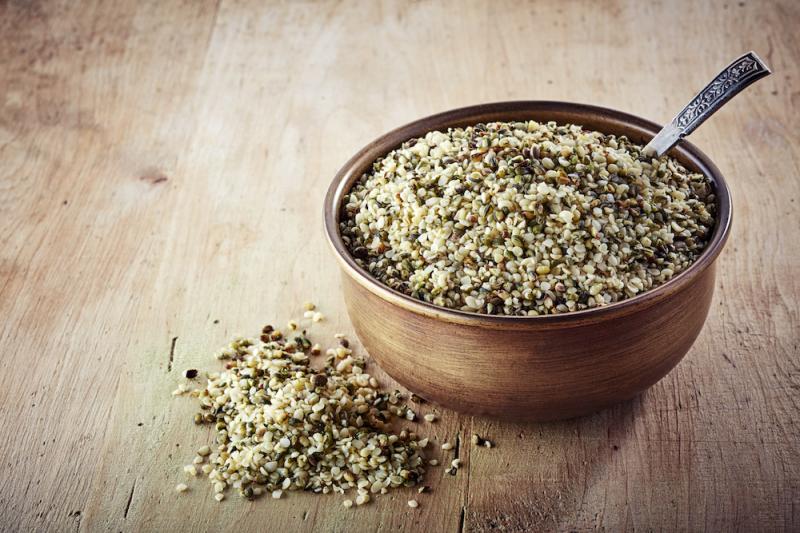 You can also try adding hulled hemp seeds to your diet. An internet search will yield lots of possible uses, including hemp seed butter (like peanut or almond butter), hemp milk, pesto, hummus, and energy bars. They have a mild nutty flavor and can be added to smoothies, granola, and many other foods. You can also purchase hemp protein powder.
You can also try adding hulled hemp seeds to your diet. An internet search will yield lots of possible uses, including hemp seed butter (like peanut or almond butter), hemp milk, pesto, hummus, and energy bars. They have a mild nutty flavor and can be added to smoothies, granola, and many other foods. You can also purchase hemp protein powder.
If you want to use hemp leaves as medicine you must extract them either in oil or in glycerine. Phytocannabinoids are fatty compounds and are not water-soluble. So make a hot oil extraction or try extracting them using the sealed simmer glycerite method, described in Modern Herbal Dispensatory.
Be warned that there are small amounts of THC in hemp leaves which, while valuable medicinally as part of the entourage effect, will make you test positive on a drug test. So if this is a concern stick to THC-free CBD products.
I hope this article has helped make you aware of the many positive uses for hemp, particularly if, like me, you had a negative view of the cannabis plant. Even though cannabis can be abused, it has many potential benefits as well, blessing mankind with recyclable fiber, nutritious food, and valuable herbal medicine.
Steven's Articles
-

-
Barberry and Healthy Personal Boundaries
A thorny shrub for fighting infections and supporting…
December
-

-
The Evidence for Berberine
A yellow alkaloid found in traditional infection-fighting…
-

-
The Sensible Use of Caffeinated Herbs
Kola nuts, guarana, and yerba mate and other herbs…
-

-
The Health Benefits and Problems with Coffee
This popular caffeinated beverage can be beneficial…
October
-

-
Understanding Caffeine & Cellular Adaptation
Preserving the power of caffeine's buzz and the…
September
-

-
Horseradish
A pungent spice for aiding protein metabolism…
-

-
Banaba or Crepe Myrtle
A beautiful tree from Southeast Asia whose leaves…
August
-

-
Monkeyflowers
Flower essences to help see ourselves more clearly…
-

-
Mariposa Lilies
Strengthening the bond between mother and child…
-

-
The Noble Bay Leaf
A common kitchen herb for aiding digestion and…
-

-
Epimedium: Horny Goat Weed
A circulatory stimulant and kidney yang tonic…
July
-

-
The Medicinal and Nutritional Benefits of Apricots
A nutritious fruit and valuable medicinal seed for coughs
-

-
Dogwoods
Asian dogwood is used to stop excessive discharge,…
June
-

-
Neem: The Village Pharmacy
A popular Ayurvedic remedy for dental and immune…
-

-
Spilanthes: The Toothache Plant
A traditional remedy for teeth and gums, as well…

